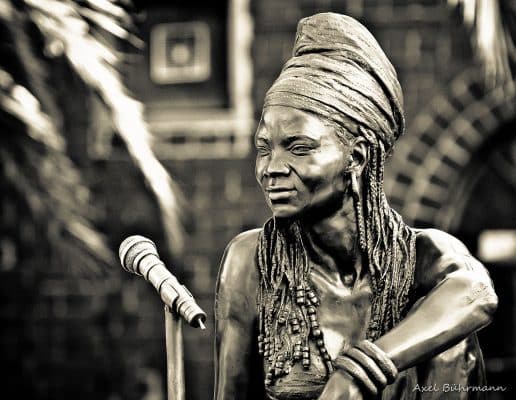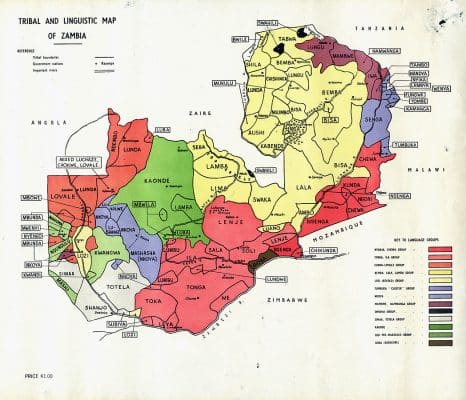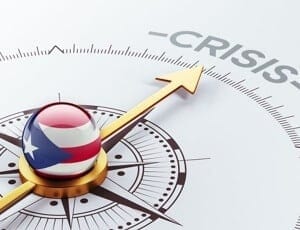 Witnesses to History
Witnesses to History
CALEB MAUPIN

Full size sculpture of Brenda Fassier, a renowned South African anti-apartheid singer. Photo: Axel Bührmann
Editor's Note
Colonialism is a murderous, exploitative process, and it takes many forms. What is clear in this supposedly "post-colonial" world is that it isn't. It isn't any more post-colonial than is the claim that we live in a post-racial world. It is lies, comfortable lies, for the propaganda machines to disseminate so that the quiet benefactors of oppression can live their privileged lives and not consider uncomfortable questions. In this article, Caleb Maupin uses Zimbabwe as a case study in the "uncolonialism" of our time.
In covering a recent protest movement unfurling in Zimbabwe, mainstream Western media seem unable to report on country’s president without making references to him as a “dictator” and “authoritarian.”
Yet the case against Robert Mugabe, the 92-year-old president of Zimbabwe and leader of the Zimbabwe African National Union – Patriotic Front (ZANU-PF), is difficult to justify, especially considering all of Zimbabwe’s recent elections have been monitored by the United Nations, and the Movement for Democratic Change (MDC), the main opposition party, currently divided into two factions, is widely represented in the government.
Further, Zimbabwe’s emergence as a nation struggling against not just the power of colonialism and white supremacists, but also the economic domination of a settler minority, tells an entirely different story.
Opposition parties like the MDC, which receives support from the United States, are allowed to operate freely in Zimbabwe. Newspapers that support the MDC and openly praise the previously existing apartheid regime are widely distributed, coexisting alongside pro-government state media. The idea that Zimbabwe is a totalitarian state that forbids dissent is simply not consistent with reality.
While Western media has few positive things to say about Mugabe, Zimbabwean voters clearly disagree. A 2015 survey by Zimbabwe’s Mass Public Opinion Institute found that Mugabe continues to enjoy popularity among the country’s urban and rural populations.
Even in 2012, a year before the last elections were held, popular support for the MDC was on the decline. In May 2013, The Guardian quoted Raymond Majongwe, secretary general of the 14,000-strong Progressive Teachers’ Union, as saying: “I’m feeling seriously let down by the MDC.”
His statement came after the party entered into a power-sharing agreement with the ZANU-PF following contested elections in 2008, but before that so-called “unity government” ultimately dissolved. He noted, presciently:
“The power-sharing agreement could be the undoing of the MDC leadership. They exposed their own naivety and appetite for opulence and extravagance. In four years the level of wealth these MDC guys have accumulated is shocking. If the MDC wins the election, fine, they can go ahead and loot the country like their predecessors.”
US has long planned to oust Mugabe
U.S. machinations to overthrow the Mugabe-led government in Zimbabwe are nothing new, particularly in terms of Washington’s support to the MDC.
Morgan Tsvangirai, the leader of the MDC, who served as prime minister from 2009-2013, toured the world in 2009, meeting with British Prime Minister Gordon Brown and U.S. President Barack Obama. After his meeting with Obama, Tsvangirai said he was “grateful to him for his leadership” and that Obama would “continue to provide us with direction.”
In “Supporting Human Rights and Democracy: The U.S. Record 2005-2006,” the State Department reported: “The U.S. human rights strategy in Zimbabwe focused on maintaining pressure on the regime, assisting democratic forces, strengthening independent media, increasing public access to information, promoting accountability for the regime’s crimes, and providing humanitarian aid for Zimbabwe’s suffering people.”
The report further noted U.S. efforts to disseminate information on civil rights and made accusations of fraudulent parliamentary elections.
The State Department’s 2007 Performance Report on Zimbabwe boasted of the United States’ role in propping up the MDC as a viable opponent to Mugabe’s ZANU-PF:
“Following the bloody onslaught of the Mugabe regime against the MDC and civil society during the past year, USG [U.S. government] assistance helped rebuild the party’s battered structure and better position it to participate in the upcoming elections. The USG also assisted the MDC to effectively identify, research, and articulate policy positions and ideas within Zimbabwe, in the region, and beyond. In particular, USG technical assistance was pivotal in supporting MDC\’s formulation and communication of a comprehensive policy platform, which demonstrates the party’s preparedness to take over the reins of government in 2008.”
In a 2008 analysis of the document, Stephen Gowans, a Canadian writer and political analyst, noted:
“The neo-liberal, foreign investor-friendly economic policies Washington favors are central to the policy platform of the Tsvangirai faction of the MDC. The State Department document reveals that the MDC’s policy orientation may be based more on US government direction than its own deliberations.”
It’s also important to consider the role of U.S. aid money and the U.S. Agency for International Development, or USAID, in Zimbabwe. The organization, which has a long history of imperialist intervention under the guise of humanitarian aid, has remained active in Zimbabwe despite targeted sanctions imposed by the U.S. In fiscal year 2012, for example, Zimbabwe received $152,534,664 in U.S. economic assistance, including $61,987,763 from USAID and $49,648,024 from the State Department.
‘Rhodesia’ was wiped off the map
To understand why Washington is working to topple Mugabe, the country’s repeatedly elected president, and the ZANU-PF, its internationally-recognized government, one must be familiar with Zimbabwe’s history.
Defenders of the Israeli settler regime will often accuse their critics of being “inflammatory” and “extremist” for wanting to “wipe Israel off the map.” However, there is historical precedent for the erasure of European settler regimes. Zimbabwe became a country after Rhodesia, a country whose 1969 constitution enshrined the rule of whites, was toppled.
Rhodesia was the name given by settlers to the region in southern Africa that the indigenous people called Zimbabwe. It was named after Cecil Rhodes, the famed colonizer and advocate of British imperialism. When Zimbabwe declared its independence from Britain in 1965, the white minority owned almost all of the land, except for the Tribal Trust Lands, where black Africans were forced to live, similar to the “bantustans” of South Africa. During the day, blacks worked as servants and laborers in the estates, plantations, and cities owned by whites, and at night they returned to the designated areas where they were allowed to live and farm.
Roger Riddell, a staff member of the Catholic Institute for International Relations and editor of the institute’s series “From Rhodesia to Zimbabwe,” wrote an article in 1980, titled “Zimbabwe’s Land Problem: The Central Issue.” In the article, Riddell explains that not only did Europeans hold vastly more land than the Africans, they also held more fertile agricultural land:
“The importance of land in Rhodesia does not lie so much in the inequalities per se, but because inequalities in access to land are accompanied by growing overpopulation, landlessness, land deterioration, and increasing poverty in the African areas alongside serious underutilization of land in the European areas.”
The 7 million Africans were not full citizens of Rhodesia, unlike the white minority, which peaked at just under 300,000 in the late 1960s. Ian Smith, the wealthiest white farmer and prime minister of Rhodesia from 1964-1979, said: “The white man is the master of Rhodesia, has built it and intends to keep it.” The country’s 1961 Unilateral Declaration of Independence, which was committed to independence from Britain but not majority rule, reserved 50 national assembly seats for the country’s white settler minority and just 15 for the African majority.
Receiving weapons and support from both China and the Soviet Union, the indigenous African population took up arms against Smith’s white-minority rule in the 1970s. ZANU-PF, currently the ruling party in Zimbabwe, is the result of a merger of several different armed revolutionary organizations that fought against the apartheid government of Rhodesia. Britain deployed troops to fight against the African people, and the U.S. formally recognized and backed the Rhodesian apartheid regime. International media and Western politicians generally referred to the uprisings of impoverished African people as “terrorism” and supported the white settler government in the name of opposing “communism.”
As the white settler government of Rhodesia faced a wider insurgency from African people, it became a favored cause among white supremacists. Neo-Nazis and fascists from all over the world went to fight against the African rebels. James Earl Ray, who was convicted of assassinating Dr. Martin Luther King Jr., had worked closely with the “Friends of Rhodesia.” During his 2015 killing spree inside a church in South Carolina, the white supremacist murderer Dylann Roof wore the flag of the long deposed Rhodesian settler government.
Mugabe emerged as the charismatic leader of the armed uprising. With Mugabe as their commander and representative, guerrilla fighters carved out what the white settlers called “no-go areas,” liberated territories which were controlled by the African revolutionaries and served as bases for the uprising. ZANU-PF described itself as a socialist party. Interviewed during the war, Mugabe said:
“It is absolutely wrong to allow a set of individuals to acquire control and ownership of those resources that are God-given. They are not man-made, the land, the water, the forest, the animals, the fish in the river, the minerals. These are given to us by nature, and it is in principle wrong for any one man to claim ownership of such resources that should belong to the people as a whole.”
On Dec. 21, 1979, the prolonged conflict known as the Rhodesian Bush War concluded with the signing of the Lancaster House Agreement. Rhodesia was abolished, and the Republic of Zimbabwe came into existence. The treaty specified that the new government could not seize white-owned land for ten years. At the time of the agreement, the country’s 120,000 white families controlled at least half of the country’s arable farmland, while 7 million Africans lived in extreme poverty.
Eroding white supremacy, changing property relations
Many predicted a “white genocide” following ZANU-PF’s election under the new constitution. However, once ZANU-PF assumed power in the elections following the 1979 treaty, no such thing occurred. Despite leading a “white republic” and ordering his troops to slaughter tens of thousands of civilians, Ian Smith, the leader of the white settler government, was spared any punishment for his documented war crimes. He lived in luxury on his estates until his death of natural causes in 2007.
Many whites left Zimbabwe, relocating to South Africa or Europe, but aside from a few incidents, no reports of widespread revenge killings took place. In accordance with the Lancaster House Agreement, whites who were owed pensions by the oppressive Rhodesian apartheid government continued to received payments from the new government until 1990.
The government led by ZANU-PF vastly expanded access to education, and Zimbabwe leads Africa in adult literacy. During the 1990s, the economy of Zimbabwe, presided over and tightly regulated by the ZANU-PF, was described by the Washington Post as being “among the strongest on the continent.”
The ZANU-PF government stayed true to its promise not to forcibly redistribute property until 1997, long after the ten year period agreed to in the treaty. Prior to 1997, many white farmers left Zimbabwe, voluntarily selling their property to the state for negotiated compensation. Britain welcomed white farmers with open arms, and has even established Zane, a charity that supports whites who wish to migrate from Zimbabwe.
Beginning in 1997, land belonging to the white minority has been gradually, forcibly redistributed to Africans. Veterans of Zimbabwe’s revolutionary army were the first to receive land, and by 2011, over 237,000 African families had acquired their own land, while 300 white farms remained intact.
When the land seizures began, Western press reports alleged the land reform was corrupt and giving land only to government bureaucrats. However, The Zimbabwean published the results of a 10-year study of the program, which found that less than 17 percent of the land went to civil servants, and the overwhelming majority went to rural peasants, unemployed Africans, and others who were not deeply connected to government officials.
No one debates that the majority of those who have received land hold a favorable view of the ZANU-PF government. Following the land redistribution campaign, violence erupted on more than a few occasions when white farmers refused to give up land and held violent standoffs with government officials and locals.
‘We want to be left alone’
As the reforms began, Mugabe was subject to demonization in Western media. In 2000, ZANU-PF suffered its first major defeats at the polls and began sharing power with the MDC, which has received funding from the State Department and whose leader has openly admitted to taking “direction” from President Obama.
The redistribution process slowed agricultural production in Zimbabwe. The process of transitioning farms from the large plantations owned by white settlers, to small individual plots owned by African families, was difficult on its own. But it was also compounded by the fact that Africans who had never owned their own farms did not have easy, immediate access to many types of modern agricultural technology previously employed by white farmers. The U.S. made the economic situation far worse by imposing economic sanctions on Zimbabwe starting in 2001, heavily restricting its ability to export agricultural goods. The sanctions alsolimited Zimbabwe’s access to key agricultural imports needed to make fertilizer.
Speaking at the U.N. General Assembly in 2008, Mugabe said, “We want to be left alone.” He urged Western forces to stop meddling in his country’s internal affairs, and to allow Zimbabwe to alter its economic system toward one featuring a more equitable distribution of wealth.
Despite continued demonization in Western media, Zimbabwe continues to make economic changes. In December, Zimbabwe announced that it was adopting the Chinese yuan as legal tender. In exchange, the People’s Republic of China cancelled Zimbabwe’s $40 million debt to Chinese banks.
In March, Mugabe announced that the country’s diamond mines will be nationalized.
“Companies that have been mining diamonds have robbed us of our wealth,” Mugabe said. “That is why the state must have a monopoly.”
When making the announcement, Mugabe also pointed out that a recent drop in diamond prices has increased the frequency of swindling and corruption surrounding the already crime-stricken industry. Zimbabwe supplied about 13 percent of the world’s diamonds in 2013, but experts quoted by Reuters warned that the country is expected to account for less than 3 percent of the global supply this year.
The president criticized not only Western-owned mining corporations, but also those based in China, and argued that nationalizing the mines will ensure that the people of Zimbabwe get a fair share of the wealth created by their natural resources.
For those who follow U.S. foreign policy, it should be clear why Washington seeks an end to the rule of Mugabe and the ZANU-PF: Zimbabwe’s government is seizing control of the country’s natural resources, redistributing land, and cutting into the profits of Western corporations. Furthermore, Zimbabwe has aligned itself with China, an emerging economic rival of Wall Street.
Western intervention is never the answer
Western media and the CIA have learned to manipulate humanity’s basic feelings of compassion and solidarity for the purpose of conducting “regime change.” Media campaigns routinely highlight atrocities — both real and invented — and build up public opinion for “humanitarian intervention.”
This is the case in Zimbabwe, where Western media selectively report on corruption, violence and suffering in line with biases for regime change held by Washington and its Western allies.
It also happened in Libya, where NATO bombing and a coordinated campaign to topple the government of Moammar Gadhafi were carried out with the stated objective of saving the lives of innocent people. However, the result has been widespread chaos and poverty in what was once Africa’s most prosperous country. The previously stable country stands divided today, as rival factions battle for power, while militant groups likeDaesh (an Arabic acronym for the terrorist group known in the West as ISIS or ISIL) have set up shop.
Iraq, Afghanistan, and Syria have all suffered the effects of U.S.-backed regime change waged in the name of human rights. The populations that were championed as oppressed victims in the Western media broadcasts that built the case for intervention, are far worse off than before.
American media’s talk about human rights is selective. Governments that reject economic domination by American-based banks and corporations, and those which compete with them on the global market, become targets of demonization. Meanwhile, atrocities perpetrated by repressive regimes that cooperate with the U.S. are generally overlooked, or, as in the case of Saudi Arabia, supported.
A movement like the one unfolding in Zimbabwe right now — a movement championed in Western media and led by someone who has since fled to the U.S. — is unlikely to improve the situation of Zimbabwe’s people. U.S. efforts to cripple Zimbabwe’s current leader and party by funding the opposition isn’t evidence of U.S. concern for human rights; it’s evidence that Mugabe and the ZANU-PF aren’t adhering to the rules of U.S. hegemony and Western dominance.
While Zimbabwe certainly faces social and economic challenges, the Pentagon will not solve them. Western destabilization and intervention will make matters worse. Only the African people — people who have defeated an oppressive regime and rolled back the horrors of white minority rule — only they can lead the country forward.

[ditty_news_ticker id="127552"]
Caleb Maupin

Is an American journalist and political analyst. Tasnim News Agency described him as "a native of Ohio who has campaigned against war and the U.S. financial system." His political activism began while attending Baldwin-Wallace College in Ohio. In 2010, he video recorded a confrontation between Collinwood High School students who walked out to protest teacher layoffs and the police. His video footage resulted in one of the students being acquitted in juvenile court. He was a figure within the Occupy Wall Street protests in New York City. Maupin writes on American foreign policy and other social issues. Maupin is featured as a
Distinguished Collaborator with The Greanville Post.
READ MORE ABOUT CALEB MAUPIN HERE.
[huge_it_share]
Note to Commenters
Due to severe hacking attacks in the recent past that brought our site down for up to 11 days with considerable loss of circulation, we exercise extreme caution in the comments we publish, as the comment box has been one of the main arteries to inject malicious code. Because of that comments may not appear immediately, but rest assured that if you are a legitimate commenter your opinion will be published within 24 hours. If your comment fails to appear, and you wish to reach us directly, send us a mail at: editor@greanvillepost.com
We apologize for this inconvenience.


Nauseated by the
vile corporate media?
Had enough of their lies, escapism,
omissions and relentless manipulation?
GET EVEN.
Send a donation to
The Greanville Post–or
SHARE OUR ARTICLES WIDELY!
But be sure to support YOUR media.
If you don’t, who will?
ALL CAPTIONS AND PULL-QUOTES BY THE EDITORS, NOT THE AUTHORS.


=SUBSCRIBE TODAY! NOTHING TO LOSE, EVERYTHING TO GAIN.=
free • safe • invaluable
If you appreciate our articles, do the right thing and let us know by subscribing. It’s free and it implies no obligation to you—ever. We just want to have a way to reach our most loyal readers on important occasions when their input is necessary. In return you get our email newsletter compiling the best of The Greanville Post several times a week.
[email-subscribers namefield=”YES” desc=”” group=”Public”]
 Nauseated by the
Nauseated by the







